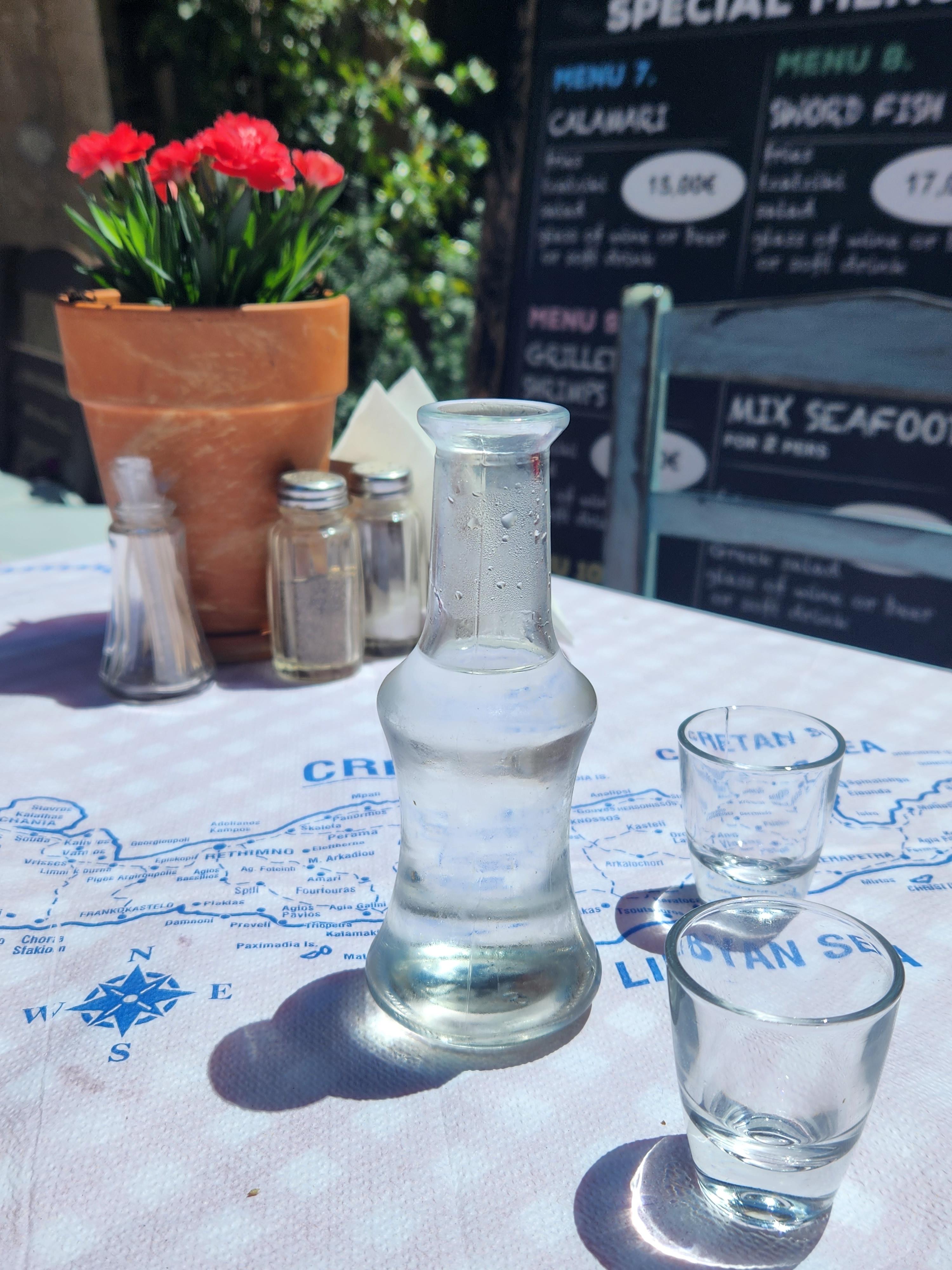Raki, also known as Tsikoudia, is a traditional Cretan spirit that has been produced on the island for centuries. It's made by distilling grape skins and sometimes other local ingredients like thyme or rosemary. We recently tried a delicious version that is combined with honey. The result is a clear, potent spirit that's typically enjoyed as an aperitif or digestif.

Raki has played an integral role in Cretan culture for centuries. In fact, it's often considered a symbol of hospitality in the region. When you visit a Cretan home or taverna, it's likely that you'll be offered a glass of Raki as a welcoming gesture. It's also common to enjoy Raki as part of a larger meal or celebration, accompanied by small plates of meze. For example, on a Best of Crete day tour, we were offered Raki after an olive oil production facility and olive oil tasting experience and again offered Raki after sampling cheese and seeing the cheese production and aging process. And for certain, we have been offered Raki after ever meal after the presentation of our bill. It is usually served with a light dessert sampling if after a meal. 



 As I tasted my first glass of Raki in Crete, I couldn't help but compare it to other spirits that I had tried in my travels. One of the most obvious comparisons was to Italian Grappa, a spirit that's also made from the leftover byproducts of winemaking.
As I tasted my first glass of Raki in Crete, I couldn't help but compare it to other spirits that I had tried in my travels. One of the most obvious comparisons was to Italian Grappa, a spirit that's also made from the leftover byproducts of winemaking.
Like Raki, Grappa is typically clear and has a high alcohol content. However, Grappa is made from leftover grape skins, stems, and seeds, rather than just grape skins as is the case with Raki. Additionally, while Raki is traditionally flavored with anise, Grappa is typically unflavored and has a more straightforward grape flavor.
Cretan Raki and Turkish Raki, on the other hand, share more similarities than differences. Turkish Raki, also known as Lion's Milk, is made from distilled grape pomace, which is the leftover pulp and skins from the winemaking process. The anise-flavored spirit is also typically served with water and ice, which causes it to turn a cloudy white color.

Like Turkish Raki, Cretan Raki is also flavored with anise, but it's made from grape skins rather than pomace. The result is a spirit that has a milder anise flavor with more subtle herbal notes. Cretan Raki is typically served straight and sipped slowly, often accompanied by small plates of meze.
While Turkish Raki and Cretan Raki share some similarities, they also have distinct differences. For example, Turkish Raki is often consumed as part of a social gathering or celebration, while Cretan Raki is primarily associated with hospitality and used to welcome guests into a home or taverna.
As I explored more of Crete, I discovered that Raki production is often a family affair. Many Cretan families have been producing Raki for generations, using traditional methods that have been passed down over time. In fact, it's not uncommon for families to gather together to produce Raki each year, using the grape harvest from their own vineyards.
In addition to being an important part of Cretan hospitality, Raki production also plays a role in the local economy. Many small-scale producers sell their Raki at local markets and festivals, helping to support the local agricultural industry.
Overall, my experience with Raki in Crete was a memorable one. From the warm hospitality to the unique flavors of the spirit itself, I couldn't help but be charmed by this traditional Cretan beverage. Whether you're a fan of spirits or simply looking to experience the local culture, a glass of Raki in Crete is not to be missed.
Please reach out to me if you’d like to explore a vacation in Italy, Greece, or Turkey! I'd love to help you plan your next best vacation. You can find my contact details here: card.penguins2polarbears.com
You can sign up to schedule a consultation if you have a trip in mind or sign up for my weekly newsletter for more inspiration.

